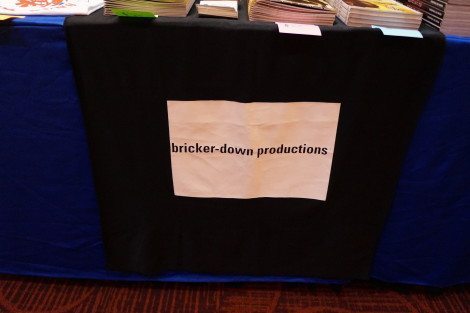
I’m sure we’ve all heard about Kickstarter by now, but do you know how to successfully complete a Kickstarter campaign? It is obviously the ultimate goal of all creators who set out to fund their projects through this particular crowdfunding source. There’s something about the name that spurs on excitement, but there’s also a lot of hard work that goes into a campaign to make it successful. With Kickstarter, it is an all or nothing game. You either make your goal and get to reap the rewards of your faithful pledgers, or you fall short and have to start all over again from zero.
It can be stressful, tedious, and take up a lot of time to run a successful Kickstarter campaign. However, Justin Zimmerman had some tips for listeners at Northwest Comic Fest this weekend during his panel on this very subject. As a creator who has had numerous successful Kickstarter campaigns, he definitely has some wisdom to share with those who are looking to take the plunge into crowdfunding.
First tip: Don’t get caught up in the amount you could get from Kickstarter. Start with the minimum.
It might be tempting to look at other successful campaigns that have managed to pull in ten, twenty, or thirty thousand dollars. Obviously, for most projects, that kind of money would be invaluable. The quality could improve, as could the general marketing, and a team could even hire staff and get paid themselves for their work. However, the reality of Kickstarter is that those kinds of campaigns are one in a million and as a newbie creator, it isn’t time to shoot for the stars. Rather, Justin gave the sage advice that starting with the minimum needed to complete the project or break even should be the starting point. Anything past that goal is icing on the cake and can be used to improve the quality of the reach of the product.

Second tip: Look at available comparable campaigns.
Kickstarter is great insomuch that it maintains and archive of all campaigns ever created. Comparing and contrasting your project with similar projects that were either successful or unsuccessful can go a long way in providing a direction for your campaign. By looking through the mistakes and successes of those who have come before you, it will be easy to recognize patterns that will lead to pulling in the money necessary to fund the project. Don’t reinvent the wheel! See what others have done and use that as a starting point.
Third tip: Make it personal.
Here’s the thing, Kickstarter is mostly about getting a bunch of strangers to support a project that may or may not actually happen. When someone pledges to a Kickstarter campaign, they do so only when they trust that it is highly likely they’ll get the product they have been promised. As it says on Kickstarter’s site, they are not actually responsible for delivering the final product. You pledge at your own risk, and a lot of people have been scorned by past campaigns that left them out some cash without anything to show for it. Be open about your previous projects, boost your credibility, and be open and honest with your updates as the Kickstarter progresses. Be human and foster the trust that’s necessary to get people to open their wallets and believe in your project.

Fourth tip: No one wants to pay your rent.
One of the pitfalls of campaigns comes in the form of charts showing where the money goes. Here’s the bottom line: consumers don’t care about paying your rent. They don’t generally care about your salary, either, or if you’re going to make a profit. Consumers, at the end of the day, want to exchange their money for tangible goods and services. They aren’t really interested in how well the artists are being paid, they want to know that the product they will be receiving will be worth the money they are pledging for something they won’t get to hold in their hands until months after the campaign is over. The best way to promote a campaign is to show whoever is pledging that their money is going to produce the very best product available, a product they’ll be proud to have in their home.
Fifth tip: Keep Kickstarter rewards exclusive; people love exclusives!
This should be a no brainer, but it bears mentioning. Kickstarter rewards, if they’re meant to pull people in to specifically support the Kickstarter, should ultimately be exclusive to the campaign. People enjoy being a part of the creation process, which also means owning exclusive items to commemorate their part in the process. Someone is going to be more likely to pledge if they see that their name will be immortalized in the back of the book from now until the end of time. They’re going to be excited to pledge and get a t-shirt that only members of the exclusive Kickstarter club will ever get to own. When people feel like they are part of the process, they are more willing to give more money because they now have a personal investment where before there was nothing. Give the people Kickstarter exclusives, and they will come!
Hopefully all the above advice will be helpful to anyone setting out to start their own Kickstarter campaign. You can check out Justin’s long history of successful campaigns through his site, Bricker-Down Productions. Have tips of your own to add to this post? Feel free to leave them in the comments!